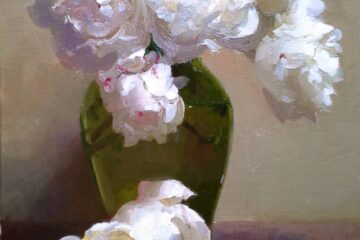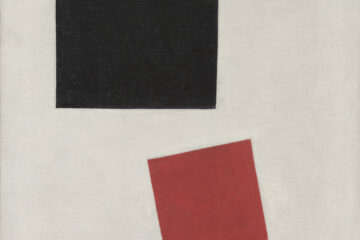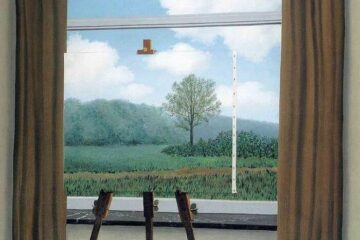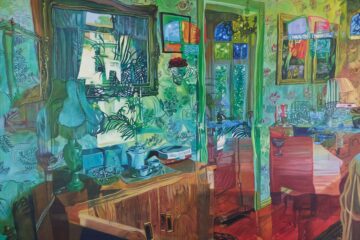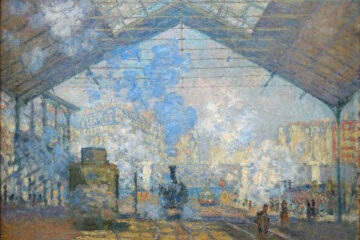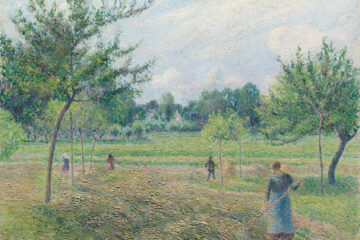Polarities can either destroy us or help us achieve a new level of unity. It’s a choice we have the power to make.
View the study sheet here. Recording here.
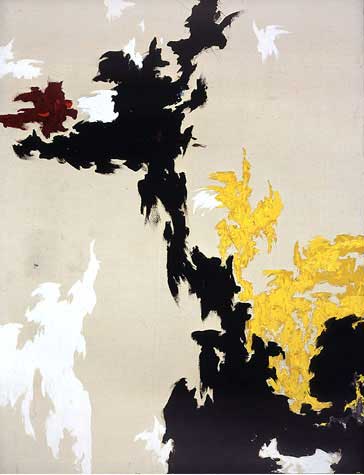
We live in a historically highly polarized world. Research polls tell us that the share of Americans who consistently hold conservative or liberal opinions has doubled in recent decades. Negative views of the opposing political party have grown substantially. Increasingly, we have turned to media platforms which confirm our existing points of view, strengthening divisions among us. Shared interests now play less of a role than do shared political beliefs in shaping our social relationships.
This division into camps, ones which withdraw into isolation from one another, erodes trust in institutions…and in each other. Curiosity about the other, interest in an exchange of views, willingness to compromise…all seem quaint relics from an ancient past.
This kind of polarization makes for an infertile social soil. The educator Parker Palmer has written: “Nothing new can grow between us when we speak to each other from the place where we are right.” Palmer was moved to write those words after reading Yehuda Amichai’s poem “The Place Where We Are Right:”
From the place where we are right/Flowers will never grow/The place where we are right/Is hard and trampled/Like a courtyard/But doubts and wondering/Dig up the world/Like a mole/Like a plow/And a whisper will be heard/In the place where the House once stood/That was destroyed.
There is a way that polarities can serve to fertilize rather than deplete our social soil. It requires an act of imagination, one that enables us to see beyond static binary terms.
Clyfford Still was the first artist to break thoroughly from the use of identifiable subject matter in his paintings. He did so in a way that laid the foundation for what became known as Abstract Expressionism. As early as 1938 he was creating monumentally large canvasses awash in great fields of color.
Still’s canvasses are sites of dramatic tensions, describing a yearning to transcend limitations of shape, form, color…and even the canvass itself. “It’s intolerable to be stopped by a frame’s edge,” he wrote.
Color, brush stroke and composition, normally the medium of the visual artist, are not the focus of his work. They are limited instruments used to redirect our vision, to challenge our settled notions. “I never wanted color to be color. I never wanted texture to be texture, or images to become shapes. I wanted them all to fuse into a living spirit.” There is a unity that can be achieved only by bringing into tension forces of enclosure and liberation, background and foreground, containment and release.
Pictured here is his painting PH-118. Still refused to name his paintings, not wanting to influence in any way what the viewer might see there. On this canvass against a muted background are vivid explosions in white, yellow, red, and black. The edges of those forms are uneven, charged. They are organic, resisting containment. Pushing against the border of the canvass, they refuse to be confined.
Still’s paintings are testimonies to the necessary conflict between the human and nature, the transitory and the ongoing. They constitute less an aesthetic statement than a spiritual biography, giving witness to the power unleashed by forces in tension with one another. “These are not paintings in the usual sense,” he wrote. “They are life and death merging in fearful union. As for me, they kindle a fire; through them I breathe again, hold a golden cord, find my own revelation.”
On first viewing, the book of Leviticus seems to be a voice standing for stasis and rigid polarities. There is virtually no narrative in it, no movement in the story of the Israelites. It highlights the dangers of boundaries being breached: ruptures of the skin, discharge of fluids from the body, menstruation, birth. All of these piercings of boundaries require a religious ritual to restore the individual to wholeness.
In distinguishing between a condition that requires such a restorative ritual and a state of being that does not, Torah uses the terms tamei (“ritually impure”) and tahor (“ritually pure”). Some translations render those as “unclean” and “clean.”
The term tamei is used in this week’s Torah portion Tazria-Metzora when describing the condition of a woman who has just given birth. A ritual of isolation followed by offerings is required of the woman in order for her to be restored to a state of tahor.
It is easy to read these two terms as binary: one is either one or the other at any moment. However, Nina Rubin and Rabbi Hillel Katzir in their article “Tahor and Tamei: A New Understanding of Ritual Purity and Impurity” explore the etymology of those terms and their use in Torah. They point out that the fundamental use of the word tahor in Torah is to describe things (gold, salt, incense) that are not mixed with anything else. It describes a state of “bounded wholeness.” By contrast, tamei identifies an object, or a person, that has had its boundaries breached. They are opened up, vulnerable.
Rubin and Rabbi Katzir note that many of the activities that can result in a condition of tamei are connected to individual intimacy, including sex and giving birth. In such a moment, one has opened up, losing one’s exclusive sense of self. They suggest that rather than viewing tahor and tamei in static binary terms, it is helpful to see them as a continuum and to appreciate the negative and positive aspects in each of them. In our life we are continually moving between polarities of bounded wholeness and vulnerability.
We are currently in the middle of the counting of the omer. It is a seven-week period during which we examine and refine our character by studying seven divinely emanated emotional attributes, not in their static, fixed definitions but in their dynamic interactions with each other. Some of those attributes seem to be polar opposites, such as generosity and severity. Our reflection on their engagement with each other discloses new dimensions of each, and of ourselves, that we might not otherwise have seen.
The goal of perceiving that dynamic engagement of seeming polarities is to achieve a new sense of personal integrity. The counting period concludes at the holiday of Shavuot, where we once again stand at Mount Sinai receiving the clarifying light that is Torah.
Adrienne Rich in her poem “Integrity” describes the results achieved from a “wild patience” to see beyond isolated polarities: Anger and tenderness: my selves/And now I can believe they breathe in me/as angels, not polarities/Anger and tenderness: the spider’s genius/to spin and weave in the same action/from her own body, anywhere/even from a broken web.
The primary source of tamei according to the Rabbis is death. It disrupts our sense of “bounded wholeness.” Tazria-Metzora identifies the birthing of life also as a source tamei. Perhaps this similar identification of two seeming polarities is what Clyfford Still meant by his paintings being “life and death merging in fearful union.”
Imagination – the primary medium of artist and poet…and Torah – helps us to see the truth that lies beyond the static and the binary. Our polarities can be either sources of continuing social and spiritual erosion or the soil in which promises of wholeness will grow. To achieve the latter requires a wild patience.
Join us here at 7:00 p.m. (PT) on Thursday May 1 as we explore life and death merging.
Oil on canvass PH-118 by Clyfford Still


